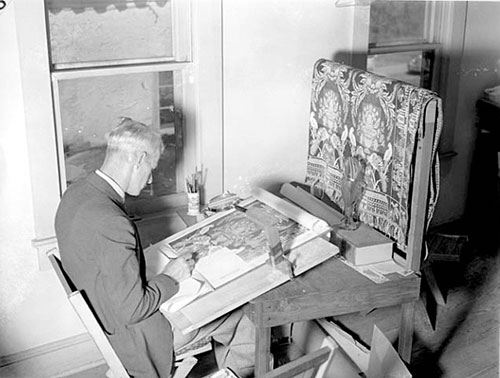WPA Archives - A Short History of the Works Progress Administration
By 1933 millions of Americans were out of work. Bread lines were a common sight in most cities. Hundreds of thousands roamed the country in search of food, work and shelter. "Brother, can you spare a dime?" went the refrain of a popular song.

An early step for the unemployed came in the form of the Civilian Conservation Corps (CCC), a program enacted by Congress to bring relief to young men between 18 and 25 years of age.
Run in semi-military style, the CCC enrolled jobless young men in work camps across the country for about $30 per month. About 2 million young men took part during the decade.
They participated in a variety of conservation projects: planting trees to combat soil erosion and maintain national forests; eliminating stream pollution; creating fish, game and bird sanctuaries; and conserving coal, petroleum, shale, gas, sodium and helium deposits.
Work relief came in the form of the Civil Works Administration. Although criticized as "make work," the jobs funded ranged from ditch digging to highway repairs to teaching. Created in November 1933, it was abandoned in the spring of 1934. Roosevelt and his key officials, however, continued to favor unemployment programs based on work relief rather than welfare.
The Works Progress Administration (WPA), the principal relief agency of the so-called second New Deal, was an attempt to provide work rather than welfare. Under the WPA, buildings, roads, airports and schools were constructed.
Actors, painters, musicians and writers were employed through the Federal Theater Project, the Federal Art Project and the Federal Writers Project. In addition, the National Youth Administration gave part-time employment to students, established training programs and provided aid to unemployed youth. The WPA only included about three million jobless at a time; when it was abandoned in 1943 it had helped a total of 9 million people.
But the New Deal's cornerstone, according to Roosevelt, was the Social Security Act of 1935. Social Security created a system of insurance for the aged, unemployed and disabled based on employer and employee contributions.
Many other industrialized nations had already enacted such programs, but calls for such an initiative in the United States by the Progressives in the early 1900s had gone unheeded.
Although conservatives complained that the Social Security system went against American traditions, it was actually relatively conservative. Social Security was funded in large part by taxes on the earnings of current workers, with a single fixed rate for all regardless of income.
To Roosevelt, these limitations on the programs were compromises to ensure passage. Although its origins were initially quite modest, Social Security today is one of the largest domestic programs administered by the U.S. government.
Citations
Excerpt from Chapter 10: The New Deal and New War, an Outline of American History, U.S. Department of State's Bureau of International Information Programs. http://usinfo.state.gov/products/pubs/history/ch10.htm
Image Credit: Magnus Fossum, a WPA artist, copying the 1770 coverlet "Boston Town Pattern" for the Index of American Design.
Coral Gables, Florida, February 1940
National Archives, Records of the Work Projects Administration
(69-N-22577)

